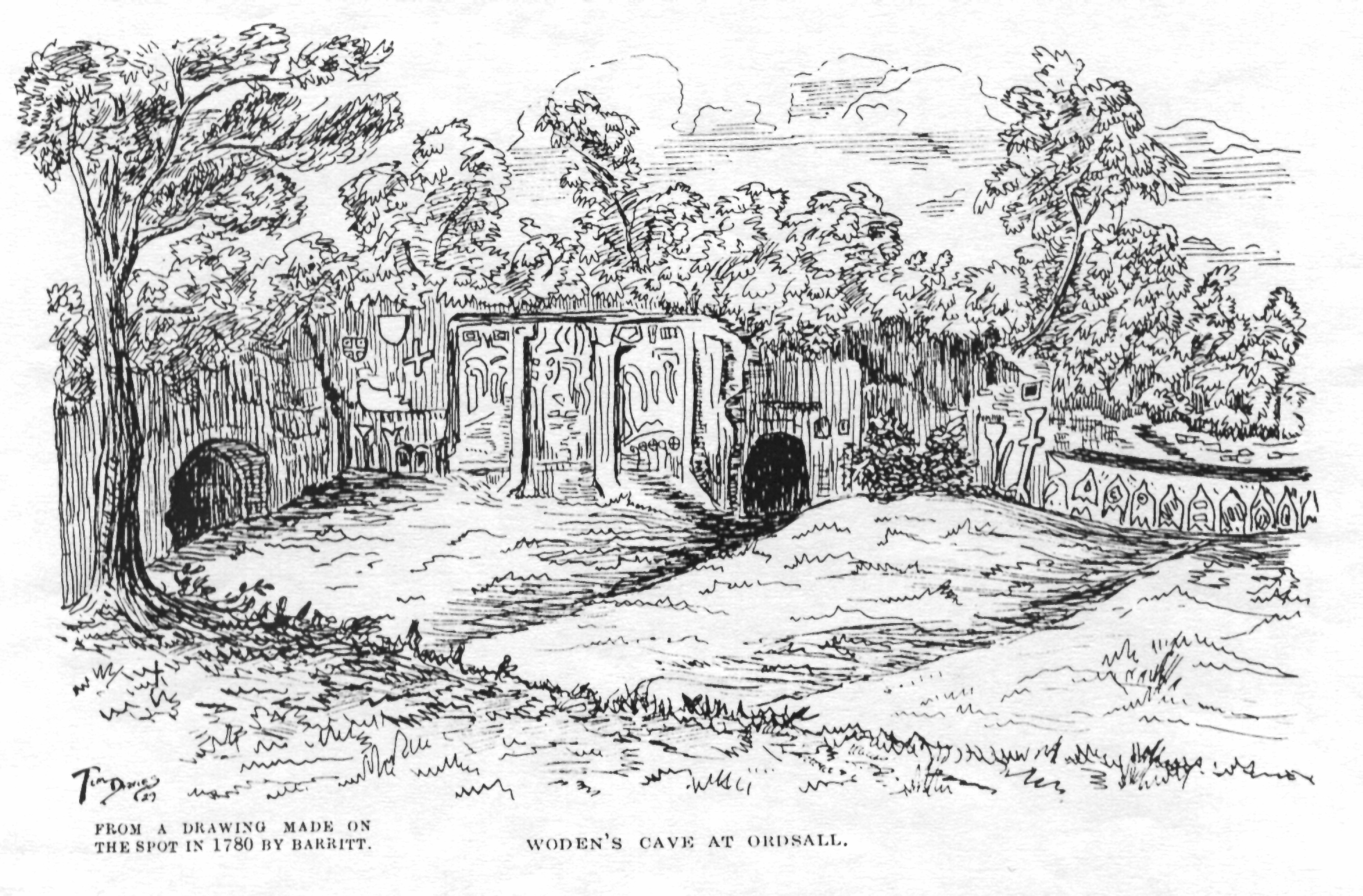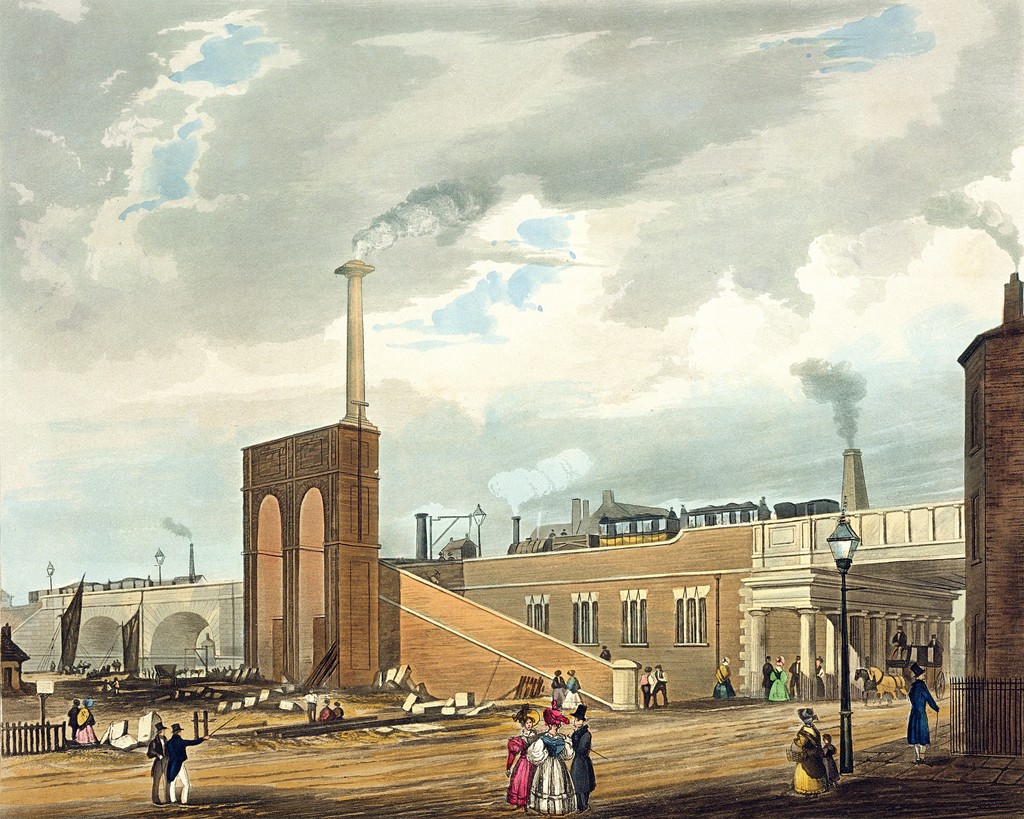|
Ordsall Lane Railway Station
Ordsall Lane railway station is a closed railway station on the Liverpool to Manchester line. History The station was located on the Liverpool and Manchester Railway, which opened to traffic in September 1830. The station wasn't listed in initial timetables, but early company records state that it was one of the intermediate stopping points on the route. By August 1849 it had been fully opened to traffic, though even then it wasn't listed in Bradshaw's Guide until March 1850."Disused Stations - Ordsall Lane" 'Disused Stations Site Record''; Retrieved 30 September 2016 One of its primary functions was to act as an interchange station between the L&MR (which from 1844 had been diverted to |
Ordsall, Greater Manchester
Ordsall is an inner city suburb of Salford, Greater Manchester, England. The population at the 2011 census was 14,194. It lies chiefly to the south of the A57 road, close to the River Irwell, the main boundary with the city of Manchester, Salford Quays and Manchester Ship Canal, which divides it from Stretford. Historically part of Lancashire, Ordsall was the birthplace of the bush roller chain and is home to Ordsall Hall. History The name Ordsall has Old English origins being the personal name ''Ord'' and the word ''halh'', meaning a corner or nook, which has become the modern dialect word "haugh". This, indeed, describes the position of the manor of Ordsall, for its boundary on the south side is a large bend in the River Irwell, which became the site of the docks for the Manchester Ship Canal. Ordsall first appears in records in 1177 when Ordeshala paid two marks towards an aid, a feudal due or tax. Antiquarian and Geologist, Samuel Hibbert-Ware gave a different etymolog ... [...More Info...] [...Related Items...] OR: [Wikipedia] [Google] [Baidu] |
British Rail
British Railways (BR), which from 1965 traded as British Rail, was a state-owned company that operated most of the overground rail transport in Great Britain from 1948 to 1997. It was formed from the nationalisation of the Big Four British railway companies, and was privatised in stages between 1994 and 1997. Originally a trading brand of the Railway Executive of the British Transport Commission, it became an independent statutory corporation in January 1963, when it was formally renamed the British Railways Board. The period of nationalisation saw sweeping changes in the railway. A process of dieselisation and electrification took place, and by 1968 steam locomotives had been entirely replaced by diesel and electric traction, except for the Vale of Rheidol Railway (a narrow-gauge tourist line). Passengers replaced freight as the main source of business, and one-third of the network was closed by the Beeching cuts of the 1960s in an effort to reduce rail subsidies. On privatis ... [...More Info...] [...Related Items...] OR: [Wikipedia] [Google] [Baidu] |
Former London And North Western Railway Stations
A former is an object, such as a template, gauge or cutting die, which is used to form something such as a boat's hull. Typically, a former gives shape to a structure that may have complex curvature. A former may become an integral part of the finished structure, as in an aircraft fuselage, or it may be removable, being using in the construction process and then discarded or re-used. Aircraft formers Formers are used in the construction of aircraft fuselage, of which a typical fuselage has a series from the nose to the empennage, typically perpendicular to the longitudinal axis of the aircraft. The primary purpose of formers is to establish the shape of the fuselage and reduce the column length of stringers to prevent instability. Formers are typically attached to longerons, which support the skin of the aircraft. The "former-and-longeron" technique (also called stations and stringers) was adopted from boat construction, and was typical of light aircraft built until the ad ... [...More Info...] [...Related Items...] OR: [Wikipedia] [Google] [Baidu] |
Manchester Exchange Railway Station
Manchester Exchange was a railway station in Salford, England, immediately north of Manchester city centre, which served the city between 1884 and 1969. The main approach road ran from the end of Deansgate, near Manchester Cathedral, passing over the River Irwell, the Manchester-Salford boundary and Chapel Street; a second approach road led up from Blackfriars Road. Most of the station was in Salford, with only the 1929 extension to platform 3 east of the Irwell in Manchester. Construction and opening The station was built by the London and North Western Railway (LNWR) and opened on 30 June 1884. The station had five platforms: 1 and 2 were bays and 3, 4 and 5 were through. Platforms 4 and 5 were reached by a footbridge from near the station entrance. The opening of Exchange allowed the LNWR to vacate Manchester Victoria station to the east, which it (and its predecessors, including the Liverpool and Manchester Railway) had shared with the Lancashire and Yorkshire Railway (and ... [...More Info...] [...Related Items...] OR: [Wikipedia] [Google] [Baidu] |
Manchester Liverpool Road Railway Station
Liverpool Road is a former railway station on the Liverpool and Manchester Railway in Manchester, England that opened on 15 September 1830. The station was the Manchester terminus of the world's first inter-city passenger railway in which all services were hauled by timetabled steam locomotives. It is the world's oldest surviving terminal railway station. With tracks running at a second floor level behind the building, it could also be considered one of the world's first elevated railway stations. The station closed to passenger services on 4 May 1844 when the line was extended to join the Manchester and Leeds Railway at Hunt's Bank. Liverpool Road was superseded by Manchester Victoria station for passenger services. Like its counterpart at Liverpool Crown Street the station was converted to a goods yard. Since Liverpool Road ceased operation, the oldest railway station in use is Broad Green railway station in Liverpool which opened on 15 September 1830. The Liverpool and Manc ... [...More Info...] [...Related Items...] OR: [Wikipedia] [Google] [Baidu] |
Cross Lane Railway Station
Cross Lane railway station is a closed station on the Liverpool to Manchester line which was located on Cross Lane, Salford. It was one of the original stations on the Liverpool and Manchester Railway when it opened to traffic in September 1830, though initial facilities were very basic. It was later rebuilt by the L&MR's successor, the London and North Western Railway in more substantial fashion and by the end of the 19th century had platform faces on all four lines that passed through. British Railways closed the station to passenger traffic in July 1959 and to goods in January 1963."Disused Stations - Cross Lane" 'Disused Stations Site Record''; Retrieved 30 September 2016 It was subsequently demolished and no trace now remains – much of the former site is now occupied by the |
Windsor Link Line, Greater Manchester
The Windsor Link is a 700-metre railway line in Salford, Greater Manchester that connects Salford Crescent and Manchester Deansgate stations. It was opened by British Rail in May 1988, and came into full use in 1989. This link allows services from the Manchester–Preston line and the Manchester–Southport line, from the north-west of Manchester (such as from Southport via Wigan Wallgate and Bolton, also from Blackpool North and Lancaster via Preston) to directly access Manchester Piccadilly station: Before the link was opened, services from these lines could only run into Manchester Victoria, although indirect access for services from Wigan or Preston to Manchester Piccadilly had been possible via the West Coast Main Line's connection to the Chat Moss route; the northern route of the Liverpool-Manchester lines. Services then continue south east to and from Piccadilly to destinations such as Manchester Airport, Buxton, Hazel Grove and Chester. Government approval for th ... [...More Info...] [...Related Items...] OR: [Wikipedia] [Google] [Baidu] |
British Transport Commission
The British Transport Commission (BTC) was created by Clement Attlee's post-war Labour government as a part of its nationalisation programme, to oversee railways, canals and road freight transport in Great Britain (Northern Ireland had the separate Ulster Transport Authority). Its general duty under the Transport Act 1947 was to provide an efficient, adequate, economical and properly integrated system of public inland transport and port facilities within Great Britain for passengers and goods, excluding transport by air. The BTC came into operation on 1 January 1948. Its first chairman was Lord Hurcomb, with Miles Beevor as Chief Secretary. Its main holdings were the networks and assets of the Big Four national regional railway companies: the Great Western Railway, London and North Eastern Railway, London, Midland and Scottish Railway and the Southern Railway. It also took over 55 other railway undertakings, 19 canal undertakings and 246 road haulage firms, as well as the ... [...More Info...] [...Related Items...] OR: [Wikipedia] [Google] [Baidu] |
City Of Salford
The City of Salford () is a metropolitan borough within Greater Manchester, England. The borough is named after its main settlement, Salford. The borough covers the towns of Eccles, Swinton, Walkden and Pendlebury, as well as the villages and suburbs of Monton, Little Hulton, Boothstown, Ellenbrook, Clifton, Cadishead, Pendleton, Winton and Worsley. The borough has a population of 270,000, and is administered from the Salford Civic Centre in Swinton. Salford is the historic centre of the Salford Hundred an ancient subdivision of Lancashire. The City of Salford is the 5th-most populous district in Greater Manchester. The city's boundaries, set by the Local Government Act 1972, include five former local government districts. It is bounded on the southeast by the River Irwell, which forms part of its boundary with Manchester to the east, and by the Manchester Ship Canal to the south, which forms its boundary with Trafford. The metropolitan boroughs of Wigan, Bolton, and ... [...More Info...] [...Related Items...] OR: [Wikipedia] [Google] [Baidu] |
Manchester South Junction And Altrincham Railway
The Manchester South Junction and Altrincham Railway (MSJ&AR) was a suburban railway which operated an route between Altrincham in Cheshire and Manchester London Road railway station (now Piccadilly) in Manchester. The MSJ&AR line operated with three different systems of electrification within a period of about 60 years. The fast, frequent service resulting from the introduction of the first generation of electric trains in 1931 was a significant contributor to suburban development in the Stretford, Sale and Altrincham districts, south-west of Manchester. The southern part of the MSJ&AR's route has been part of the Manchester Metrolink light rail system since 1992. The northern section between Manchester Piccadilly and Deansgate stations is now an intensively-used section of the National Rail network, used by trains running north and west of Manchester. Construction Manchester London Road railway station (today's Piccadilly) was opened on 8 May 1842. London Road was th ... [...More Info...] [...Related Items...] OR: [Wikipedia] [Google] [Baidu] |
Manchester Victoria Railway Station
Manchester Victoria station in Manchester, England is a combined mainline railway station and Metrolink tram stop. Situated to the north of the city centre on Hunts Bank, close to Manchester Cathedral, it adjoins Manchester Arena which was constructed on part of the former station site in the 1990s. Opened in 1844 and part of the Manchester station group, Victoria is Manchester's third busiest railway station after Piccadilly and Oxford Road and the second busiest station managed by Northern after Oxford Road. The station hosts local and regional services to destinations in Northern England, such as , , Bradford, , , , Halifax, Wigan, , Blackpool (Sundays only) and Liverpool using the original Liverpool to Manchester line. Most trains calling at Victoria are operated by Northern. TransPennine Express services call at the station from Liverpool to Newcastle/Scarborough and services towards Manchester Airport (via the Ordsall Chord) from Middlesbrough/Redcar/Newcastle. Man ... [...More Info...] [...Related Items...] OR: [Wikipedia] [Google] [Baidu] |

.jpg)




